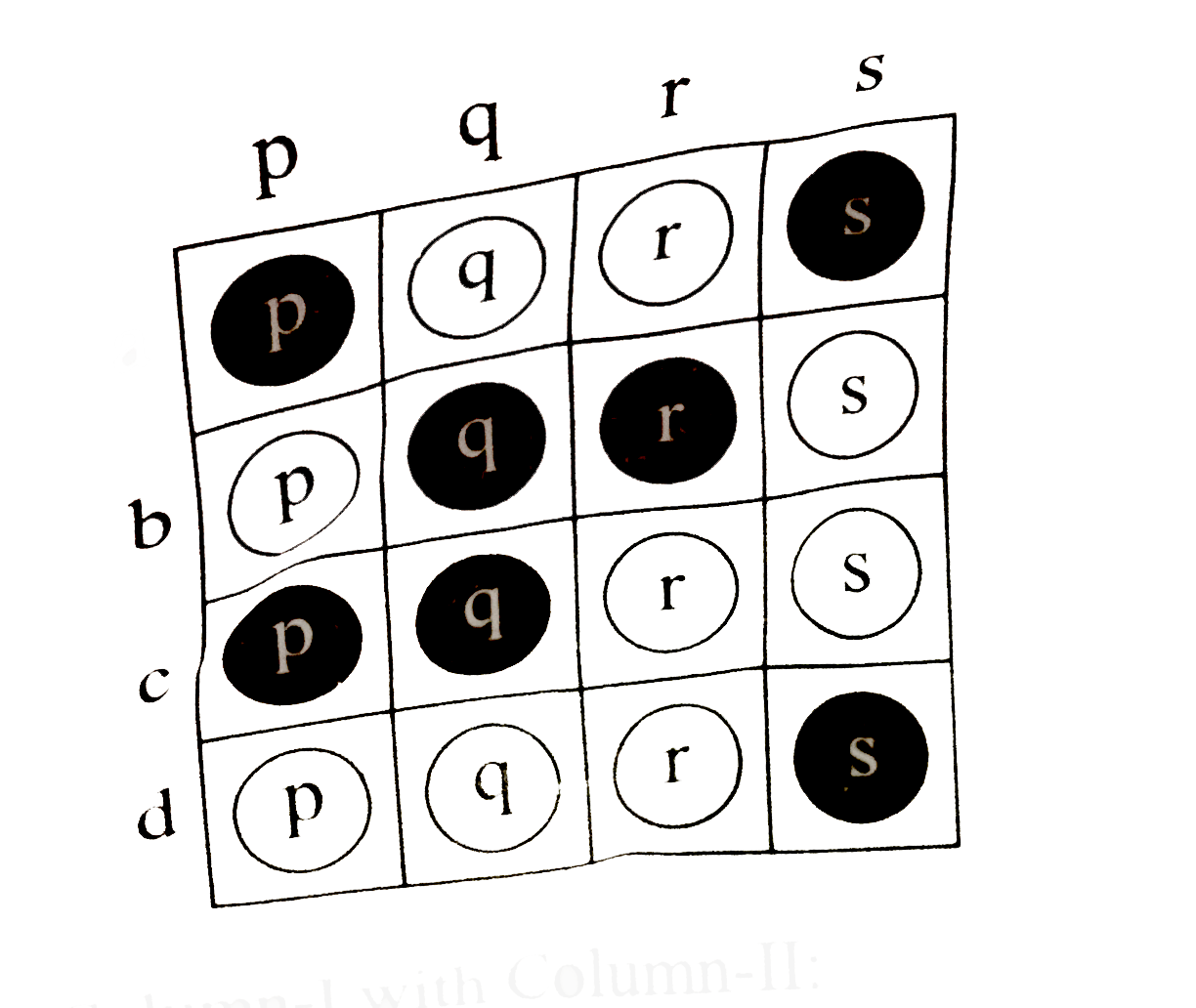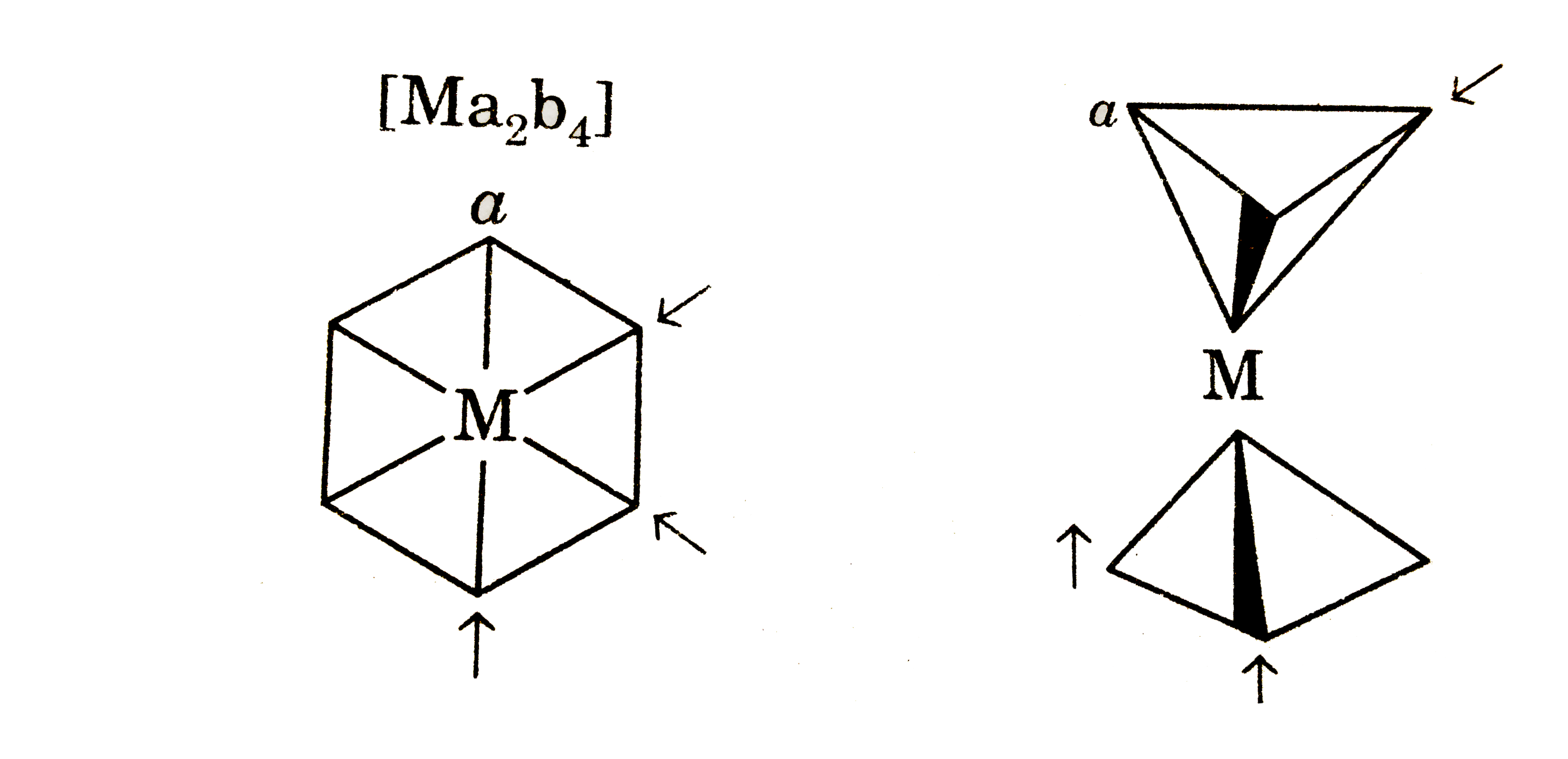According to werner, the arrangement of 6 groups around the metal centre within the co-ordination sphere can lead to three possible geometries (For Q. 1 and Q. 2) : planar hexagon, trigonal prism and octahedral. For a particular geometry, if the groups (i.e. ligands) are arranged in different ways then the possibility of geometrical isomerism will arise.
A complex [PtCl2(NH3)4]2+ in RENREW'S universe has a total 3 stereo-isomers possible. If Werner was present, then, according to him, what can be the probable shape of the complex ?
planar hexagon
trigonal prison
octahedron
both (a) and (b)
The correct Answer is:D
Topper's Solved these Questions
- COORDINATION COMPOUNDSBOOK - OP TANDONCHAPTER - COORDINATION COMPOUNDSEXERCISE - COMPREHENSION 34
2 Videos
- COORDINATION COMPOUNDSBOOK - OP TANDONCHAPTER - COORDINATION COMPOUNDSEXERCISE - COMPREHENSION 35
2 Videos
- COORDINATION COMPOUNDSBOOK - OP TANDONCHAPTER - COORDINATION COMPOUNDSEXERCISE - COMPREHENSION 32
3 Videos
- CLASSIFICATION AND NOMENCLATURE OF ORGANIC COMPOUNDS BOOK - OP TANDONCHAPTER - CLASSIFICATION AND NOMENCLATURE OF ORGANIC COMPOUNDS EXERCISE - INTEGER
2 Videos
- ELECTROCHEMISTRYBOOK - OP TANDONCHAPTER - ELECTROCHEMISTRYEXERCISE - Matrix-Matching Type Question
3 Videos
Similar Questions
The realtive stabilities of metal carbonyls and their ions can be explained on the basis of a rule which is known as 18e− rule. If number of valence shell electrons of the metal + number of electrons donated by bonded CO groups comes to be 18 electrons, then carbonyl is said to be stable.
Which of the following complexes are following 18e− rule?
View SolutionBoth double salt as well as complexes are formed by combination of two or more stable compounds in stoichiometric ratio.However, they differ in the fact that double salt dissociate into simple ions completely when dissolved in water but in complex salt, complex ions doesn't dissociate into ions.
Which of the following statements is correct for complex formed by combination of one mole of PtCl4 and four mole NH3?
View SolutionIn the complex, basic beryllium acetate [Be4O(CH3COO)6] it is known that '∗O' is acting as bridge for all 4 beryllium and (CH3COO−) as a bridiging ligand for any two berylliums, in pairs. Now, answer the following questions :
Number of Be-O-Be bond angles in the complex =x
Number of O-Be-O bond angles in the complex=y
Find the value of yx
View SolutionThe total number of alkyl groups having the molecular formula (c)C3H7(b)C4H9(c)C5H11 are.
View SolutionThis section contains 3 questions. Each question contains statement given in two columns which have to be matched. Statement (a, b, c and d) in Column-I have to be matched with statement (p, q, r and s) in Column-II. The answers to these questions have to be appropriately bubbled as illustrated in the following examples :
If the correct matches are (a-p, s), (b-q, r), (c-p, q) and (d-s), then correct bubbled 4×4 matrix should be as follows:

Match the column-I with Column-II :

View SolutionAssertion : Tetrahedral complexes having two different types of unidentate ligands coordinated with central metal ion will show geometrical isomerism . Reason : Geometrical isomerism arises in homoleptic complexes due to different possible geometric arrangement of the ligands .
View SolutionGeometrical isomerism arises in heteroleptic complexes due to different possible geometrical arrangement of the ligands. Important examples of this behaviour are found with coordination number 4 and 6. Such isomerism is not possible for a tetrahedral geometry but it is possible for square planar as well as octahedral complexes. Optical square planar as well as octahedral complexes. Optical square planar as well as octahedral complexes. Optical isomers are mirror images that cannot be superimposed on one another. These are called enantiomers. Optical isomerism is common in octahedral complexes involving bedentate ligands.
The total number of isomers possible for the complex [Co(en)2Cl2]+ is :
View SolutionGeometrical isomerism arises in heteroleptic complexes due to different possible geometrical arrangement of the ligands. Important examples of this behaviour are found with coordination number 4 and 6. Such isomerism is not possible for a tetrahedral geometry but it is possible for square planar as well as octahedral complexes. Optical square planar as well as octahedral complexes. Optical square planar as well as octahedral complexes. Optical isomers are mirror images that cannot be superimposed on one another. These are called enantiomers. Optical isomerism is common in octahedral complexes involving bedentate ligands. For which of the following complexes, are optical isomers possible ? (P) [Cr("ox")_(3)]^(3-)" "(Q) [Cr(NH_(3))_(4)(ox)^(+) (R ) [Co("ox")_(2)(NH_(3))_(2)]^(-) Select the correct answer using the codes given below :
View SolutionGeometrical isomerism arises in heteroleptic complexes due to different possible geometrical arrangement of the ligands. Important examples of this behaviour are found with coordination number 4 and 6. Such isomerism is not possible for a tetrahedral geometry but it is possible for square planar as well as octahedral complexes. Optical square planar as well as octahedral complexes. Optical square planar as well as octahedral complexes. Optical isomers are mirror images that cannot be superimposed on one another. These are called enantiomers. Optical isomerism is common in octahedral complexes involving bedentate ligands.
Which one of the following statements is false ?
View SolutionGeometrical isomerism arises in heteroleptic complexes due to different possible geometrical arrangement of the ligands. Important examples of this behaviour are found with coordination number 4 and 6. Such isomerism is not possible for a tetrahedral geometry but it is possible for square planar as well as octahedral complexes. Optical square planar as well as octahedral complexes. Optical square planar as well as octahedral complexes. Optical isomers are mirror images that cannot be superimposed on one another. These are called enantiomers. Optical isomerism is common in octahedral complexes involving bedentate ligands.
Which of the following complexes will show geometrical isomerism ?
View SolutionGeometrical isomerism arises in heteroleptic complexes due to different possible geometrical arrangement of the ligands. Important examples of this behaviour are found with coordination number 4 and 6. Such isomerism is not possible for a tetrahedral geometry but it is possible for square planar as well as octahedral complexes. Optical square planar as well as octahedral complexes. Optical square planar as well as octahedral complexes. Optical isomers are mirror images that cannot be superimposed on one another. These are called enantiomers. Optical isomerism is common in octahedral complexes involving bedentate ligands.
Select the correct statement.
View SolutionAccording to werner, the arrangement of 6 groups around the metal centre within the co-ordination sphere can lead to three possible geometries (For Q. 1 and Q. 2) : planar hexagon, trigonal prism and octahedral. For a particular geometry, if the groups (i.e. ligands) are arranged in different ways then the possibility of geometrical isomerism will arise.
If in RENREW'S universe, [PtBrCl(NH3)Py] complex was found to have two stereo-isomers, then according to Werner, which inference can be correct ?
(P) Complex must be square planar
(Q) Complex may be tetrahedral
(R ) Complex may show geometrical isomerism
(S) Complex must exhibit optical isomerism
View SolutionGeometrical isomerism arises in heteroleptic complexes due to different possible geometrical arrangement of the ligands. Important examples of this behaviour are found with coordination number 4 and 6. Such isomerism is not possible for a tetrahedral geometry but it is possible for square planar as well as octahedral complexes. Optical square planar as well as octahedral complexes. Optical square planar as well as octahedral complexes. Optical isomers are mirror images that cannot be superimposed on one another. These are called enantiomers. Optical isomerism is common in octahedral complexes involving bedentate ligands. The total number of isomers possible for the complex [Co(en)_(2)Cl_(2)]^(+) is :
View SolutionGeometrical isomerism arises in heteroleptic complexes due to different possible geometrical arrangement of the ligands. Important examples of this behaviour are found with coordination number 4 and 6. Such isomerism is not possible for a tetrahedral geometry but it is possible for square planar as well as octahedral complexes. Optical square planar as well as octahedral complexes. Optical square planar as well as octahedral complexes. Optical isomers are mirror images that cannot be superimposed on one another. These are called enantiomers. Optical isomerism is common in octahedral complexes involving bedentate ligands. For which of the following complexes, are optical isomers possible ? (P) [Cr("ox")_(3)]^(3-)" "(Q) [Cr(NH_(3))_(4)("ox")]^(+) (R ) [Co("ox")_(2)(NH_(3))_(2)]^(-) Select the correct answer using the codes given below :
View SolutionGeometrical isomerism arises in heteroleptic complexes due to different possible geometrical arrangement of the ligands. Important examples of this behaviour are found with coordination number 4 and 6. Such isomerism is not possible for a tetrahedral geometry but it is possible for square planar as well as octahedral complexes. Optical square planar as well as octahedral complexes. Optical square planar as well as octahedral complexes. Optical isomers are mirror images that cannot be superimposed on one another. These are called enantiomers. Optical isomerism is common in octahedral complexes involving bedentate ligands.
Which one of the following statements is false ?
View Solution

